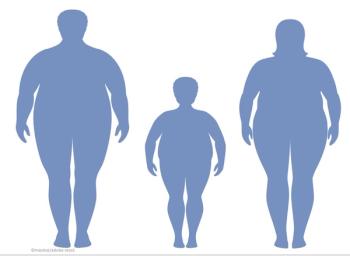
Low Birth Weight Spells Adult Risk for Diabetes and Hypertension
HELSINKI, Finland -- When babies born prematurely with a low birth weight become young adults, they are likely to have higher levels of insulin resistance, glucose intolerance, and higher blood pressure than those born at term, researchers here reported.
HELSINKI, Finland, May 16 -- When babies born prematurely with a low birth weight become young adults, they carry a health legacy that endures beyond their rocky start, researchers here reported.
By the time they are in their 20's, they have higher levels of insulin resistance, glucose intolerance, and higher blood pressure than those born at term, Petteri Hovi, M.D., of the National Public Health Institute here, and colleagues reported in the May 17 issue of the New England Journal of Medicine.
Premature birth interrupts the period of highest growth velocity during an entire lifetime and is almost always followed by a postnatal period of prematurity-associated illness, inadequate nutrition, and growth retardation, they wrote.
An earlier study in prepubertal children, Dr. Hovi said, showed that children with a low birth weight had a 34% lower index of insulin sensitivity than did those born at term, but few studies have assessed this risk in young adults.
To determine whether this difference persists into adulthood, the researchers compared 163 young adults (ages 18 to 27) with very low weights at birth and 169 participants born at term and not small for gestational age.
The cohort came from individuals born from 1978 to 1985, and discharged from the neonatal intensive care unit of Children's Hospital at Helsinki University. For each low-birth-weight survivor, the next available singleton infant of the same sex born at term (37 weeks or longer) served as the comparison.
About 40% of the participants in each group were men. The birth weights ranged from 600 g to 1,500 g in the very-low-birth-weight group and from 2,500g to 4,930 g in the term babies. Gestation age in the very-low-birth-weight group ranged from 24.0 to 35.6 weeks.
Compared with young adults born at term, those with a very low birth weight had significantly higher fasting insulin, two-hour insulin, and two-hour glucose concentrations after glucose load, as well as a higher homeostasis model assessment (HOMA-IR) index, and higher blood pressure, the researchers reported.
In the comparison, increases for very-low-birth-weight participants included:
- 6.7% in the two-hour glucose concentration (95% confidence interval 0.8 to 12.9);
- 16.7% in the fasting insulin concentrations (CI, 17.5 to 66.8);
- 40.0% in the two-hour insulin concentration (CI, 17.5 to 66.8);
- 18.9% in the insulin-resistance index determined by HOMA-IR assessment (CI 5.7 to 33.7);
- 4.8 mm Hg in systolic blood pressure (CI, 2.1 to 7.4);
- 4.1 mm Hg in diastolic blood pressure (CI, 2.2 to 6.0);
- 2.1 beats per minute faster heart rate (CI, -0.9 to 5.1).
HOMA-IR is the product of fasting insulin multiplied by fasting glucose divided by 22.5.
None of the participants had type 2 diabetes, the researchers reported.
Adjustment for the lower lean body mass in the very-low-birth-weight participants did not change these relationships, the researcher reported.
Furthermore, the researchers found that of the very low-birth-weight participants, 54 were considered to be small for gestational age, while 109 had a birth weight appropriate for their gestational age. Yet the degree of impairment in glucose regulation in adulthood was similar in both groups.
For those born very early, the time between birth and term is challenging, roughly corresponding to the third trimester of pregnancy. This period may be particularly important for the programming of glucose metabolism, the researchers said.
Premature neonates today may differ from those in our cohort, the researcher wrote. Both survival and therapy have improved. Nevertheless, they said, the findings from this cohort of young adults born two decades ago appear to be consistent with data from a younger cohort examined during childhood.
Discussing a possible study limitation, the investigators noted that although the original cohort included the entire population of living very-low-birth-weight infants in their geographic area, even after adjustment for exercise intensity and complications of preterm birth such as cerebral palsy, the results remained similar.
These results suggesting an increase risk for type 2 diabetes as well as a increased risk of death from cardiovascular causes, suggest that these young adults would benefit from targeted preventive interventions.
The finding of increased blood pressure in very-low-birth-weight young adults is consistent with previous observations and provides further support for preventive interventions in this population, Dr. Hovi said.
In an accompanying editorial, Julie R. Ingelfinger, M.D., of Harvard, and a NEJM deputy editor, said that being born prematurely means that some of what would be the third trimester, typically a sensitive period for programming, and certainly a time during which final aspects of organogenesis occur, is spent in the more difficult environment of a hospital setting in which there are many toxic substances as well as nutritional challenges.
As an example, Dr. Ingelfinger said that when a person challenged in fetal life by maternal malnutrition, infection, or gestational diabetes is faced in later life with an unlimited supply of food, the risk of weight gain is high. Metabolically speaking, the fetus "expects" to be in a postnatal environment with limited resources.
The altered physiology that results long after intrauterine challenge was previously called "perinatal programming" and has more recently been framed as the developmental origin of health and disease, she wrote.
For example, it has been suggested that oxidative stress might play a pivotal role in the developmental processes that later predispose to obesity, insulin resistance, and glucose dysregulation.
The susceptibility of an individual fetus to oxidative stress, under-and overnutrition, infection, inflammation, and smoking, as well as gestational diabetes and hypertension may depend on the time during gestation when metabolic programming occurs and on the genetic susceptibility of the fetus. At present, she said, testing this hypothesis is not possible.
"Now that many more extremely premature babies are surviving to adulthood, ensuring their health is crucial," Dr. Ingelfinger concluded.
Dr. Ingelfinger, the editorial writer, reported no potential conflict of interest.
Newsletter
Enhance your clinical practice with the Patient Care newsletter, offering the latest evidence-based guidelines, diagnostic insights, and treatment strategies for primary care physicians.













































































































































































































































































































